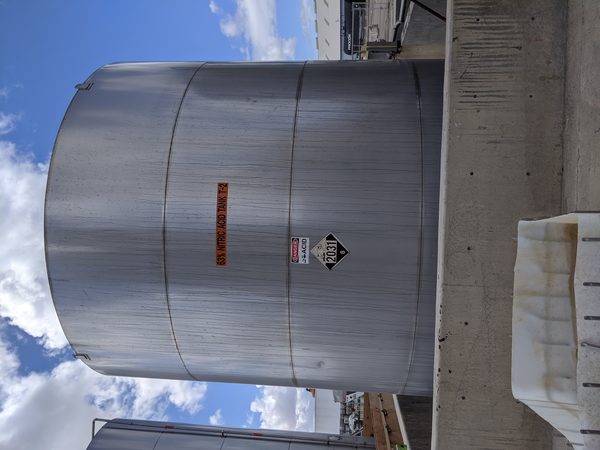Calculating Threshold Quantity for Chemicals with Concentration Qualifiers

Title 40 CFR §68.130 contains the table of RMP chemicals and their corresponding threshold quantities. Of the seventy-seven substances listed, four contain a concentration qualifier:
- Ammonia (conc 20% or greater)
- Hydrochloric acid (conc 37% or greater)
- Hydrogen fluoride/Hydrofluoric acid (conc 50% or greater)
- Nitric acid (conc 80% or greater)
What does the concentration qualifier mean?
- If the solution being used has a concentration below what is listed in the table, it is not subject to RMP. For example 19% ammonia solution is not subject to RMP, regardless of the solution quantity.
- If the solution being used has a concentration greater than or equal to what is listed in the table, it may be subject to RMP. In order to make a determination, you must calculate the amount (mass) of the toxic substance in the solution. Here are two examples:
Example 1 – 50,000 lbs of 30% aqueous ammonia solution
50,000 lbs x 0.3 (30%) = 15,000 lbs (ammonia)
Since 15,000 lbs is less than the 20,000 lbs listed in §68.130, this process would not be subject to RMP.
Example 2 – 100,000 lbs of 20% aqueous ammonia solution
100,000 lbs x 0.2 (20%) = 20,000 lbs (ammonia)
Since 20,000 lbs is the threshold quantity in §68.130, this process would be subject to RMP.
Two additional notes:
- If the inventory in a chemical process is measured in gallons, you will need to convert that value to pounds (mass) using the density of the solution.
- The California Accidental Release Prevention (CalARP) program complicates these applicability determinations. For example, Table 3 of Title 19 CCR §2770.5 lists ammonia as having a threshold of 500 lbs regardless of concentration. So, while a 19% aqueous ammonia solution process will never be subject to RMP, it may be subject to CalARP if the total amount of ammonia within the concentration exceeds 500 lbs.
For more information about this topic, refer to the EPA’s explanation.

Leave a Reply